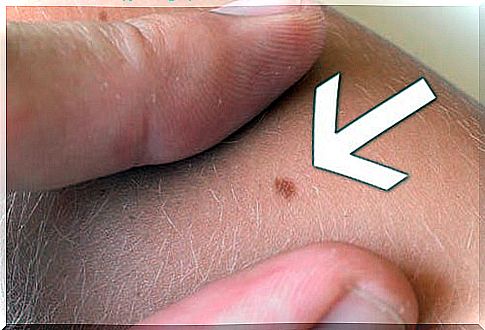Everything We Need To Know About Moles
Moles are small spots that appear on the skin. Its presence is quite common and they usually occur, usually during childhood or adolescence . These are formed by the action of cells responsible for producing skin pigment, called melanocytes.
They are also called nevi and can have various shapes: flattened; bulky; smooth; warty; in the same way, its color can also vary between brown, brown or black. There have even been cases of moles of the same color as the skin.
Are the moles all normal?
Most moles or nevi are safe, so there is no need to remove them; in almost all the people they appear, at least twelve. In fact, there are people who own more than a hundred of these brands, which are often considered even attractive.
However, when a mole changes color, size or shape, it is important to attend an urgent consultation with the dermatologist. Also, when you have any type of burning, itching, pain or bleeding.
Characteristics of common or normal moles
- They are usually found in areas exposed to the sun.
- They are usually less than 5 mm.
- Its color is uniform ; they can be pink or brown.
- They are usually round or oval, with a defined edge.
- They are usually smooth in surface.
Characteristics of abnormal or “dysplastic” moles
- They are larger than ordinary moles. They can measure more than one centimeter.
- Its shape can vary, as can its color, ranging from a light brown to a very dark one located on a pink background.
- They are located anywhere on the body, especially in those places that are regularly covered.

There are many people who can have more than one hundred atypical moles, since they can even continue to appear in advanced ages. People who have many atypical moles and who, in addition, have relatives who have suffered from this kind of moles (or failing that, melanoma), have a greater chance (compared to the rest of the population) of getting cancer of skin.
According to this study carried out by the Las Condes Clinic (Chile), people who have atypical moles should be very aware of the changes they present, especially if there is a family history of melanoma.
How can I tell if my moles are abnormal?

In order to identify an abnormal mole, you must examine your skin frequently and differentiate between a harmless mole and one that is becoming dysplastic. Must take into account:
- A suspicious mole does not have symmetry. That is, one of its halves is not the same as the other and the size, shape, color and thickness can vary.
- The edges are very irregular, blurry, they do not have a defined shape.
- The color is not the same throughout the mole, it can have several colors at the same time.
- There is usually an abnormally rapid growth of the nevus. If you had a small mole and, suddenly, you notice that it has increased in size, see your doctor immediately.
Faced with any of these signs, it is best to go to your nearest hospital, since only a doctor can professionally examine what is happening to you.
The changes that should concern a mole, as we have already said, are:
- Color change.
- Texture change.
- Itching, bleeding, or oozing.
- Non-uniform growth or decrease.
Remember that the main thing in a case like this is prevention or, in the worst case, if the melanoma has already appeared, immediate attention.








